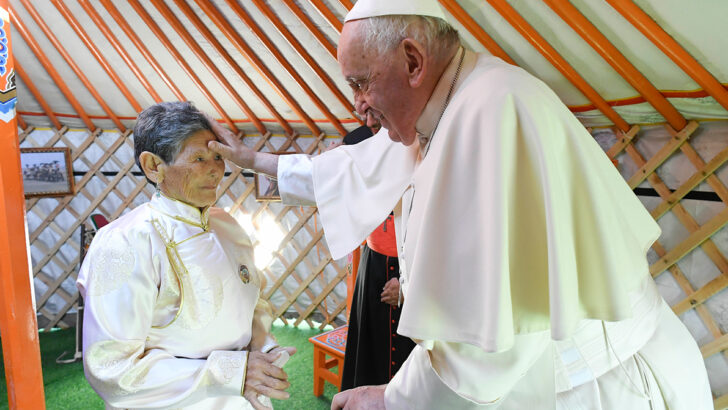The visit of Pope Francis to Mongolia elicited some curious reactions, which show that many people are far from appreciating the role of Mongolia, not only in medieval history, but also nowadays and the place in today’s world the country’s government is attempting to build.
It was pointed out that there were only about 1,450 Catholics in the country, why bother with them? This shows a sad lack of understanding of why Jesus himself in the gospels speaks about searching out the lost sheep of the flock. Isolated in the middle of continental Asia we can be sure these handful of Christians were most appreciative.
Interest
But papal interest in Mongolia is nothing new in any case. Pope Francis was merely following half a millennium later a series of papal emissaries in the 13th Century, one of whom was appointed the first archbishop of Pekin (today’s Beijing).
The travels of the Venetian merchant Marco Polo with his father and uncle who set out in 1259 for the East, only returning in 1292, are famous. Polo’s description of the world as he had seen it then is one of the great books of our culture, so calm in its narration of strange peoples and exotic places that it can completely capture the imagination if read at an early enough age.
Polo is famous. But he was the essential businessman. Less well known, were the missionaries sent into Asia by Rome on either side of his travels, men whose achievements are hardly known at all these days.
These contemporaries of Marco Pole were William of Rubruck (1253- 1255), John of Pian de Carpini (1245-1247), and Friar Oderic of Pordenone (1318-1330).
On some of his travels Friar Oderic was accompanied by another friar, one of our own, an Irishman called in the records James of Ireland, who was with him when he died in Udine in Italy in 1331. The pair visited Mongolia itself and may even have penetrated the mysterious religious city of Lhasa.
Advised
In speaking about the medieval Mongols when he was in Ulan Bator, Pope Francis, well advised by his staff, would have had these men of religion in mind. Mongolia and the Mongols had once been of great importance to the Vatican, facing as they did the spreading conquests of Islam, and it might well be again in the near future.
The Pope was welcomed as an important personality of influence from the West. Mongolia, though no longer an imperial power itself, is surrounded by other empires and those who aspire to create them. To the North there is the empire of President Putin, who as a tyrant is quite the equal of those to be found anywhere in the Middle Ages. To the south is China, who by holding what geographers call ‘Inner Mongolia’, would have an ancient claim in their eyes to dominion over Greater Mongolia, though that has long been an independent state.

To the west though are various Muslim states to which the current ruler of Turkey sees an historic attachment in a world leadership role. And the Mongols are Buddhists who are tolerant of other faiths in ways not so common among their neighbours.
Mongols
The Mongols once ruled an empire that stretched from the Pacific ocean to the borders of Europe itself. But it rose, flourished, and declined. There is a moral example in those other aspiring empires, that empires rise, flourish and fail.
This is a lesson that Britain has learned. China and Russia too learned it in the past, but have forgotten the lesson. So in offering friendship to Mongolia the Pope was thinking of the rise and fall of those other empires. The Vatican takes a long view of history.


 Peter Costello
Peter Costello Pope Francis blesses Tsetsege in a ger on the grounds of Sts Peter and Paul Cathedral in Ulaanbaatar, Mongolia, September 2. The Mongolian woman, who uses only one name, found a statue of Mary in a garbage landfill and gave it to missionaries; it is now venerated in the cathedral as Our Lady of Heaven. Photo: CNS.
Pope Francis blesses Tsetsege in a ger on the grounds of Sts Peter and Paul Cathedral in Ulaanbaatar, Mongolia, September 2. The Mongolian woman, who uses only one name, found a statue of Mary in a garbage landfill and gave it to missionaries; it is now venerated in the cathedral as Our Lady of Heaven. Photo: CNS. 